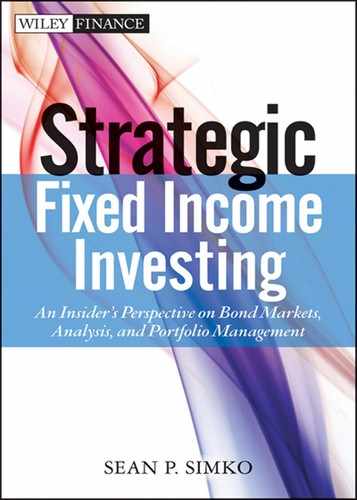Book Description
Build a fixed income portfolio that will weather volatility and instability
Designing a fixed income portfolio is an essential skill of any investment manager or advisor. This book outlines the critical components to successfully navigate through stable and turbulent markets, using real-life lessons from a seasoned institutional asset manager. The first section includes commentary on the changing fixed income market and overall economy, while the second section outlines the processes to navigate these ever-evolving markets including portfolio construction, the Federal Reserve, credit analysis and trade execution. Ladder Methodology is highlighted and the book discusses its pros and cons, gives examples of both well-constructed and poorly executed laddered bond portfolios and offers alternatives to traditional asset classes.
Benefit from lessons learned, providing real life examples of market scenarios and trades
Prepare fixed income portfolios that can weather any storm
Written by Sean P. Simko, an expert on fixed income investing, who shares his investing experiences from the past 16 years
Outlines the key principles of the Ladder strategy
From strategy to execution, Strategic Fixed Income Investing offers the road map to help investment managers prepare portfolios that will insulate investments against adverse market conditions.
Table of Contents
- Cover Page
- Title Page
- Copyright
- Dedication
- Contents
- Preface
- Acknowledgments
- Part One: The Investing Environment
- Part Two: The Fixed Income Investor
- Chapter 5: Define the End Investor
- Chapter 6: Portfolio Construction
- Chapter 7: Asset Allocation
- Chapter 8: The Federal Reserve and Central Banks
- HAWKS AND DOVES
- THE FED FUNDS RATE
- A SHORT-TERM FIXED INCOME INVESTOR
- HOOKED ON ACCOMMODATION
- DEPOSITS WITH CENTRAL BANKS
- WHAT ABOUT THE UNITED STATES?
- FOMC: LOOK FOR CLUES FROM THE FED STATEMENT
- WHAT TO LOOK FOR FROM THE FED … CLUES?
- FOMC STATEMENT: AUGUST 2011
- QE OR NOT QE
- CALMING STATEMENTS FOR INVESTORS
- Chapter 9: The Economy and the Markets
- Chapter 10: The Yield Curve
- Chapter 11: The Ladder and Why You Need One
- Chapter 12: Alternatives to a Traditional Ladder Strategy
- Chapter 13: Credit Analysis
- Chapter 14: The Four Pillars of Trade Execution
- Chapter 15: There Are No Roadblocks, Just Detours
- Index
